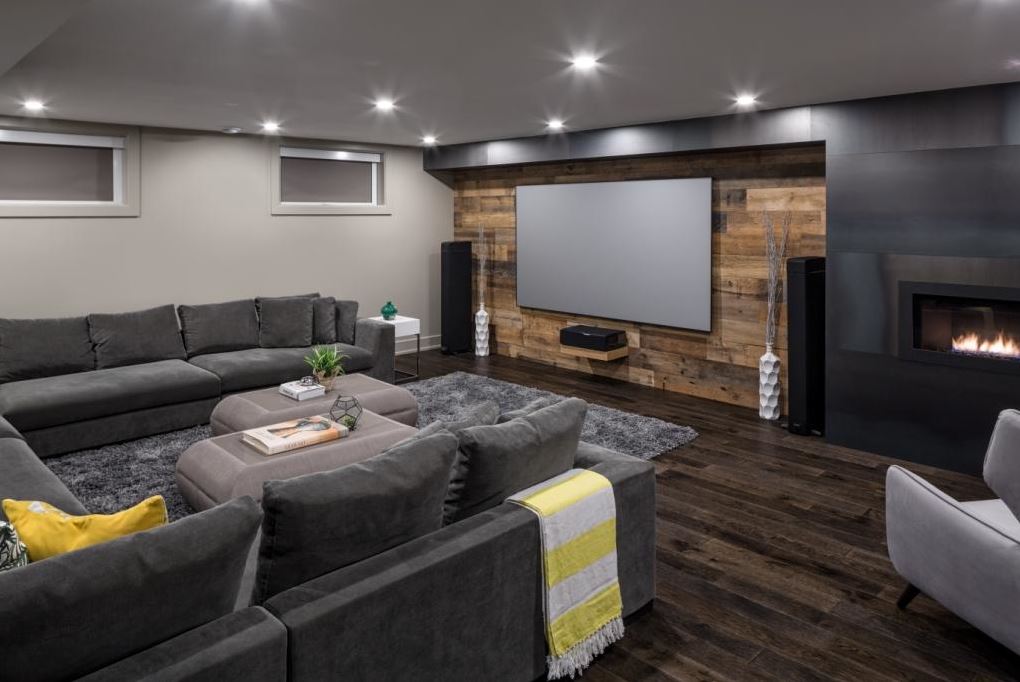A warm, comfortable, and cozy finished basement is a great feature that adds value to your home. It’s summer now, but soon the cooler weather will be here. Is your basement ready for the change in seasons?
If you’re in a new house and planning on finishing your basement for the first time, take note: finishing a basement the wrong way can bring mould, mildew and lower indoor air quality. No one wants that, so we’ve got some tips for making sure you do it right.

Five elements for a healthy and cozy finished basement
- Only finish a reliably dry basement. Even a small amount of leaked water can trigger mould, mustiness and poor indoor air quality. That’s why your basement needs to prove itself reliably dry before you invest time and money into finishing. Monitor the space and make sure it’s dry for at least a year.
- Use moisture-resistant inorganic materials. Even a dry basement might get unexpectedly damp. So use inorganic materials that won’t feed mould even in the presence of moisture. Foam-based insulation is best at reducing mould risk in basements. Avoid putting wood in contact with concrete.
- Install a subfloor. Proper basement subfloors make finished floors warmer and reduce the chance that humid summertime air will condense against cool concrete. Choose inorganic subfloor products to put against the basement floor.
- Spray foam the rim joists. Although it’s common to insulate the area where joists meet outside walls using fibre-based insulation and a vapour barrier, it’s difficult to get a proper air seal around all those joists. The resulting air leakage is why many homes have some kind of mould in the rim joist area. Spray foam eliminates this problem because it’s self-sealing when applied at least three inches thick. You’ll need a professional installer to do this work.
- Install a proper heating system. Just because you have a furnace in your basement doesn’t mean it will automatically heat the space. You need sufficient ducts to deliver heat to all areas as well as cold air return ducts at floor level to promote air circulation.
If you’re planning to hire a contractor, make sure they’re experienced, knowledgeable and professional. The Canadian Home Builder’s Association is a great source of free advice for hiring a pro and avoiding suspicious contractors. Find more information in the renovation section of this blog, or at www.getitinwriting.ca.
